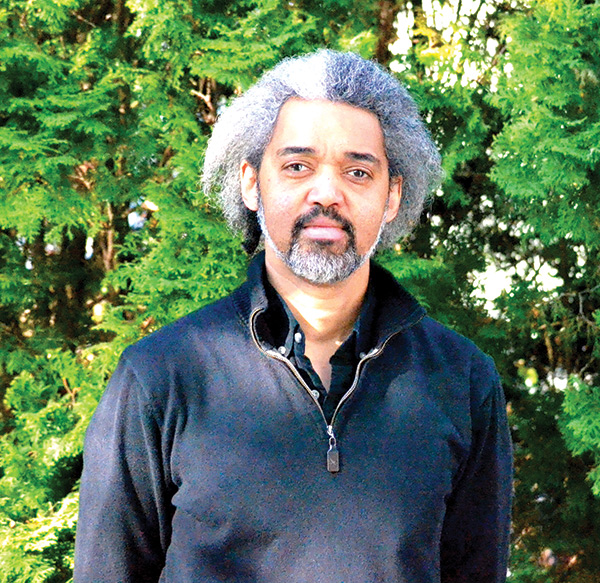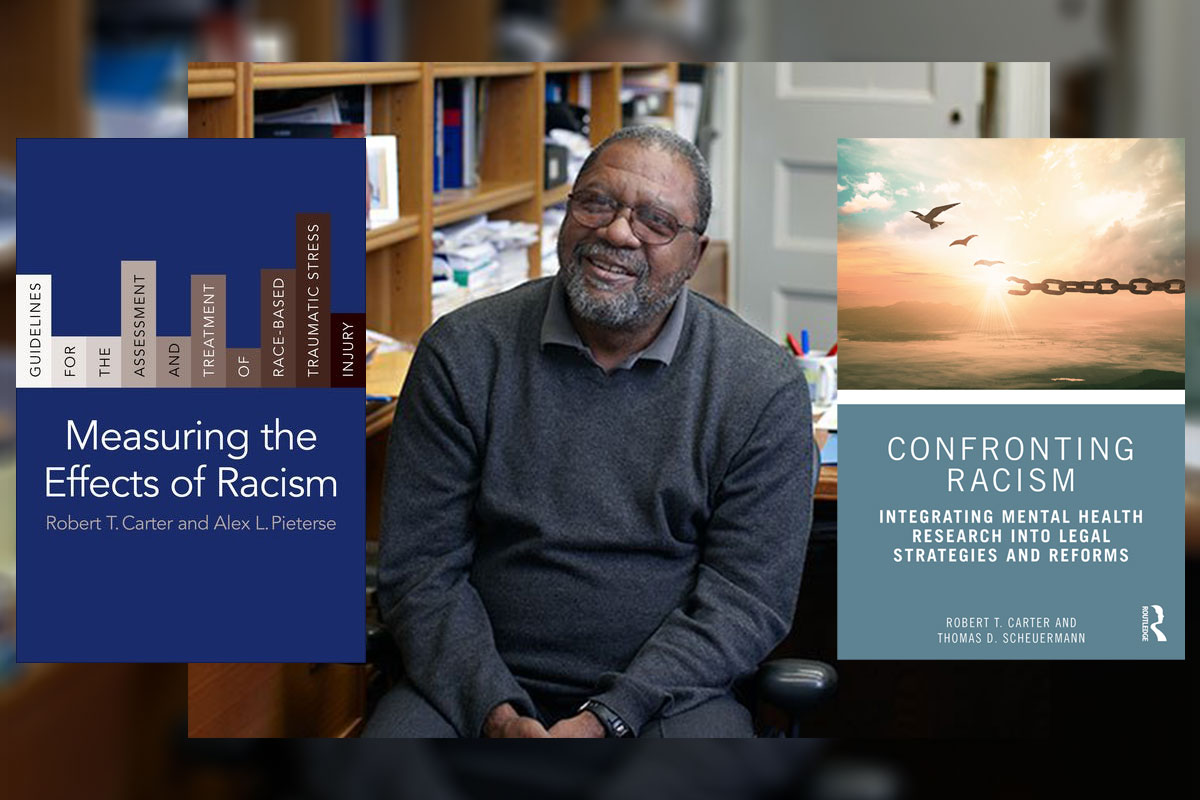The United States has passed six Civil Rights Acts (in 1866 and 1964) and created three Constitutional Amendments (the Thirteenth, Fourteenth and Fifteenth) in the name of creating a more just and egalitarian society. Yet today, more than 80 percent of all cases in which plaintiffs charge that they have suffered race-based harassment fail — and the vast majority are dismissed before arguments are ever heard.
Which is why, while many people are heartened by the wave of global protests that followed the police killings of George Floyd and other black Americans, Robert T. Carter takes a more skeptical view: “You can take down the statues, you can change the names and remove the stereotypes, but the systems that created the disparities are still there.”
Carter, Professor Emeritus of Psychology & Education, has devoted his career to, in his words, “changing the outcomes, not just the symbols.” Now, in two newly published books, he and his coauthors offer precise descriptions of the mental and emotional harm caused by race-based trauma and offer a new theory, adapted from personal injury law, for seeking legal redress.
You can take down the statues, you can change the names and remove the stereotypes, but the systems that created the disparities are still there.
Carter became involved in this research by serving as an expert witness in court cases involving charges of race-based harassment and discrimination. In the course of this work, he learned that people of color who are exposed to potentially stressful events (for example, military service) have higher levels of post-traumatic stress disorder (PTSD) then whites — including whites who experienced greater levels of stress but had lower levels of PTSD.
“I began to ask, could the experience of racism itself be traumatic?” he recalls.
Carter turned to The Diagnostic and Statistical Manual (DSM), the American Psychiatric Association’s classification of mental disorders, but found only one mention of “discrimination” and, among 52 external stressors, no references to racism or race-based stimuli.
“The notion that racism is a stressor that can harm or injure its targets was not — and still isn’t — recognized in psychological or psychiatric assessment or diagnostic systems,” he says.
The notion that racism is a stressor that can harm or injure its targets was not — and still isn’t — recognized in psychological or psychiatric assessment or diagnostic systems.
That finding was the starting point for a 20-year effort by Carter and his colleagues in which they surveyed thousands of people about their specific experiences of racism, including how long those experiences continued to reverberate, in what ways and with what consequences for the sufferer. From those studies, they created the nation’s first and only instruments for documenting and quantifying the damage that race-based stress and trauma causes to individuals, publishing their work in the journals Psychological Trauma and Traumatology.
Among their key findings: Race-based trauma does not manifest as PTSD, which typically reflects having faced a threat to one’s life, but instead, is emotional. Reactions take the form of intrusive, recurring thoughts, avoidance, irritability, anxiety, anger, rage, depression, low self-esteem, shame and guilt. And — a critically important distinction — these reactions are the result of injury, not a mental health disorder.
Since his “retirement” in 2018, Carter has significantly added to the evidence base that supports those instruments — and now he has published two coauthored books that summarize that work, place it in historical and current contexts, and show how to apply it in court.
In Measuring the Effects of Racism: Guidelines for the Assessment and Treatment of Race-Based Traumatic Stress Injury (Columbia University Press 2020), Carter and TC alumnus Alex L. Pieterse (Ph.D. ’05), Associate Professor of Educational & Counseling Psychology at the University of Albany, build on “empirical evidence accumulated over several decades” showing that “people who are exposed to racism experience stress and have adverse health outcomes such as depression, anxiety and hypertension.”

COLLECTIVE CONSCIOUSNESS Pieterse, Carter's coauthor on Measuring the Effects of Racism, says that “the unique piece about race is that it’s your experience as part of a larger collective. There is an intergenerational transmission of trauma, which leads to an ongoing sense of invalidation.” (Photo: TC Archives)
“One difficulty with charging ‘racism’ is that it’s not very specific,” Carter said in a recent interview. “It doesn’t get you very far — because what is that, how is it manifested?”
To that end, the book describes three categories of racial acts, all with equal potential to cause harm:
- Avoidance, or avoidant racism, through which, Carter says, “dominant people keep nondominant people in their place, on the margins of society or outside it entirely.” Acts of avoidant racism range from subtle social exclusion (holding meetings in locations that are inaccessible to poorer members) to the “redlining” by banks that helped create segregated neighborhoods, to the separation of immigrant families at America’s borders.
- Hostile racism, which takes the form of overtly aggressive acts to assert the power of the dominant group. “George Floyd, clearly, was the victim of hostile racism,” Carter says. “It was done to communicate to him and other Black people that he and they are of inferior status.”
- Aversive-hostile racism, or the kind of unwritten social rules that dictate where everyone sits in the lunchroom: “In other words, even if we let you in, you stay in your corner.”
Even cases that are not dismissed out of hand face a really difficult path. Typically, you have to demonstrate what I call old-fashioned, egregious racism. There has to be clear racial animus over a long period of time, with the plaintiff enduring years of racial hostility. And you have to be able to demonstrate malicious intent.
Within each of these categories, the book describes how racism operates in a given encounter, laying the ground, Carter says, for a forensic assessor to “isolate the racial encounter in time and link it to precise emotional and psychological effects. Was it sufficient to cause stress? Trauma? If the latter, did it create impairment in functioning?”
Of course, the key to winning redress for such harm is to introduce this kind of evidence in court. In Confronting Racism: Integrating Mental Health Research Into Legal Strategies and Reforms (Routledge 2020), Carter and his coauthor, Thomas D. Scheuermann, an attorney and faculty member at Oregon State University, provide an analysis of laws associated with racism and use tort law, which deals with personal injury, to fashion a theory for doing precisely that.
“Even cases that are not dismissed out of hand face a really difficult path,” Carter says. “Typically, you have to demonstrate what I call old-fashioned, egregious racism. There has to be clear racial animus over a long period of time, with the plaintiff enduring years of racial hostility. And you have to be able to demonstrate malicious intent.”
By contrast, he points out, plaintiffs in sexual harassment cases are not held to that standard. “If you’re a woman bringing a charge of sexual harassment in the workplace, it’s enough to show that you were subjected to an unwelcoming or hostile environment. As a result, the failure rate for sexual harassment cases is much lower — about 40 percent.”
[Read Carter’s 2014 piece in the Huffington Post in which he argues that race is “the different difference” — a barrier that remains far more insurmountable than gender, sexual orientation, religion, ethnicity.]
Carter and Scheuermann have fashioned their strategy by turning to the legal field known as tort law — that is, in essence, by redefining race-based traumatic stress as an injury rather than a mental disorder. Using the taxonomy and measurement scale created by Carter and his colleagues, plaintiffs could, in theory, draw a direct line to a specific event and argue that they have suffered quantifiable harms because of it.
Carter and Scheuermann have fashioned their strategy by turning to the legal field known as tort law — that is, in essence, by redefining race-based traumatic stress as an injury rather than a mental disorder.
That’s critically important, Carter says, because “while you can, currently, charge negligent or intentional infliction of emotional distress, you’ve got to be able to demonstrate and document that the emotional experience was a proximate or direct result of racial encounters. And before our approach, there was really no way to do that.”
To date, as far as Carter knows, besides him, few have used the, ras-based trauma assessment tools or legal theory in an actual court case. He’s not actively seeking a “test case,” but hopes that attorneys who read his books will begin to adapt his methods. Meanwhile, he hopes that non-lawyers will read them, too.
“There’s a general misimpression that the Constitution and the law provide far more protection than they actually do,” he says. “Agencies and advocates should be cognizant of these matters, and businesses and other organizations should be examining their own policies and procedures to avoid race-based lawsuits, much as colleges and universities and other organizations have done with sexual harassment.”
Historians may want to take note, as well, particularly of a point underscored by Carter and Scheuermann in Confronting Racism.
“For the most part our history is characterized by decisions about race and racism being made to promote the interest of Whites,” they write. “The social science and legal professions, each and together, can be seen, based on their paucity of meaningful action, as reluctant to actually address how injurious racism may be to individuals and groups, as well as to our broader society.”
No one knows yet where the protests generated by the killings of George Floyd and other innocent black people will lead. But some day, long after the shouting is over, the publication of Carter’s books may well stand as a starting point for meaningful change.
